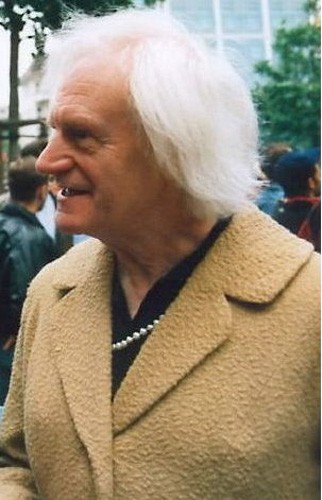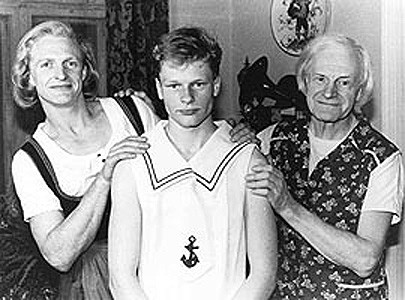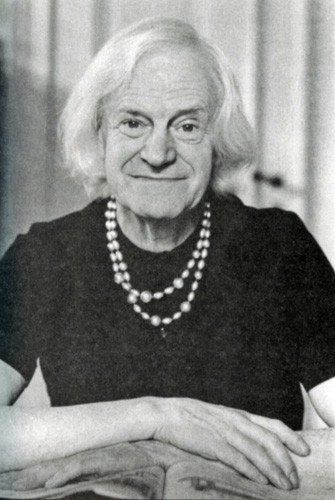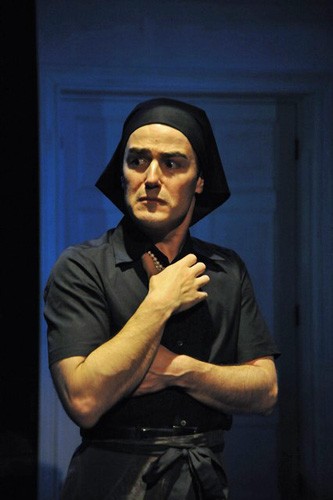
Charlotte wrote her original autobiography "I Am My Own Woman" in 1992. Original Cover.

Charlotte von Mahlsdorf, at the Gay Pride Parade in Berlin in 1994 by Andreas Filla from the Wikimedia Commons.

The film of Charlotte’s life with von Mahlsdorf herself (pictured, far right,) with Jens Taschner, who plays Charlotte from 15-17, and Ichgola Androgyn, who plays her from 20-30.

Charlotte von Mahlsdorf, from the play’s website.

Vince Gatton plays more than 30 roles in additon to Charlotte von Mahlsdorf in the Barrington Stage Company production. Kevin Sprague Photo.

Charlotte at the Manor Door.

